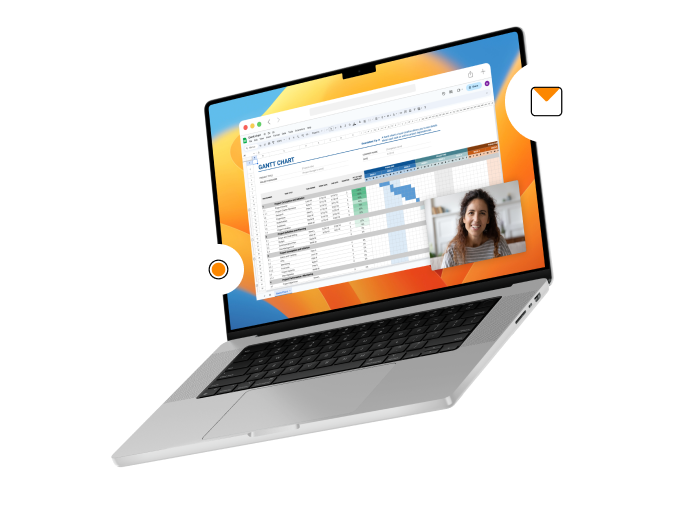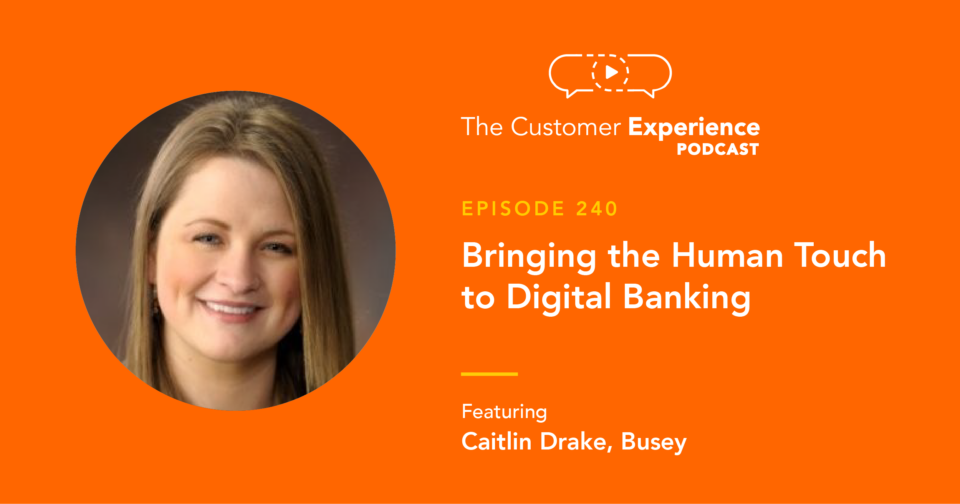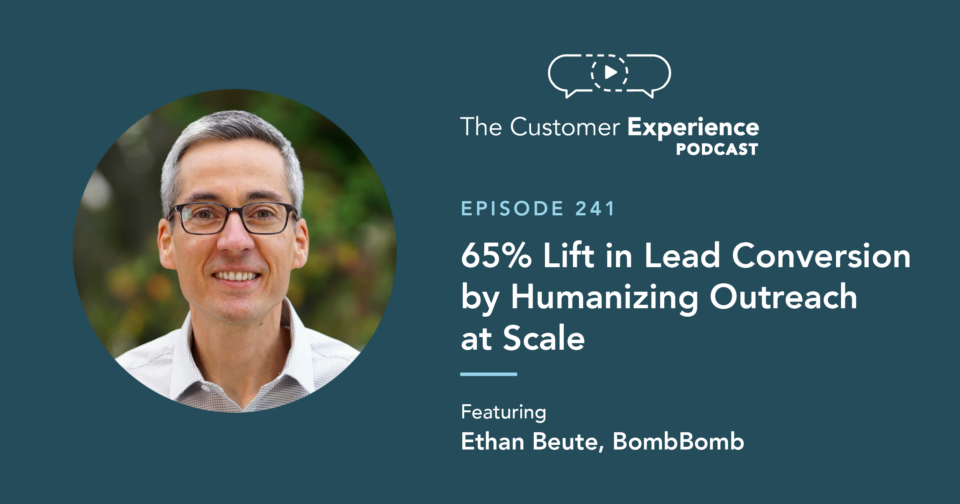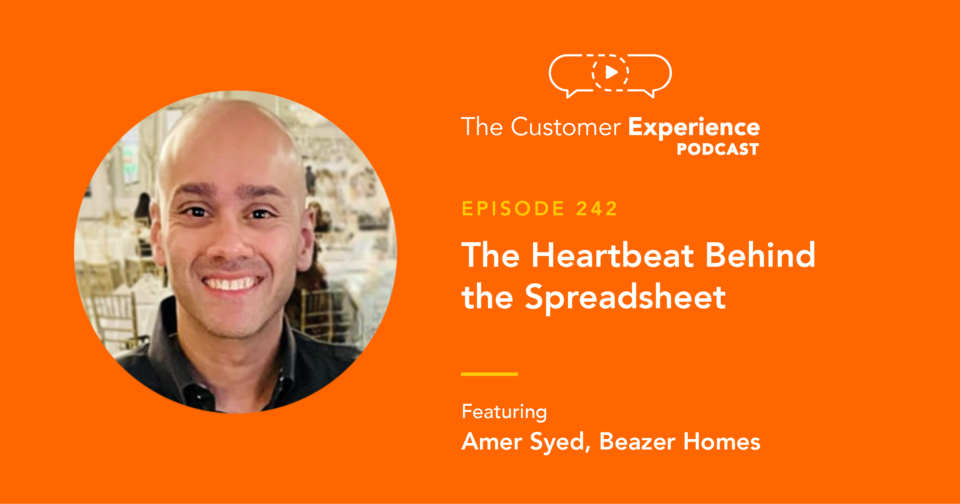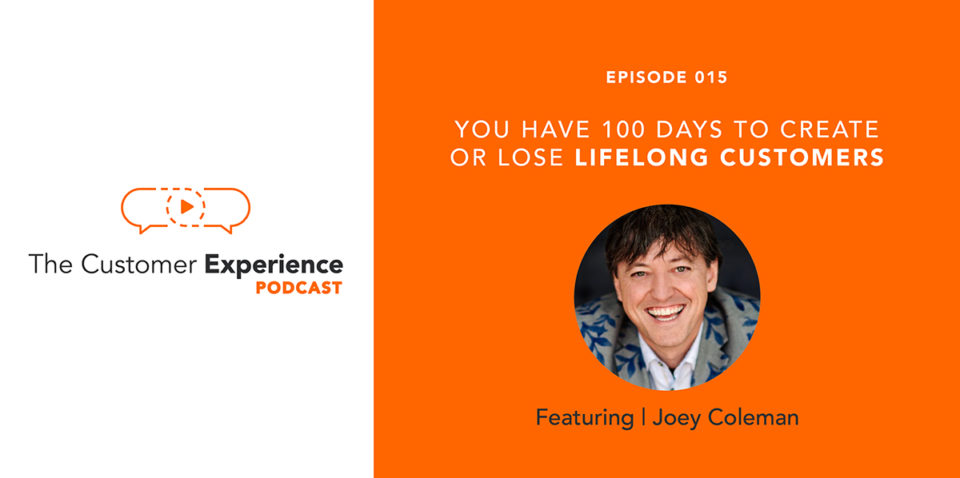
You’ve got one hundred days to make customers for life.
Do you know which tools, techniques, and touches to employ to guarantee they’ll stay?
Joey Coleman does.
He’s a speaker, advisor, and writer who’s deeply steeped in the customer experience. He’s the founder and Chief Experience Composer at Design Symphony and the bestselling author of Never Lose a Customer Again: Turn Any Sale into Lifelong Loyalty in 100 Days (which our marketing team book club loved).
Joey was kind enough to spend an hour with me recently and shared his strategies to converting customers for life.
This episode is packed with important ideas, helpful analogies, real-life stories, positive energy, and even a mindful rant (seriously). Enjoy!
You Have 100 Days to Create or Lose a Customer for Life
To hear this episode on the go (and many more like it!), subscribe and listen to The Customer Experience Podcast in Apple Podcasts.
You can also hear the episodes in Spotify, Google Podcasts, or Stitcher.
Hear the entire conversation with Joey Coleman right here: Listen to “15. You Have 100 Days to Create or Lose Lifelong Customers w/ Joey Coleman” on Spreaker.
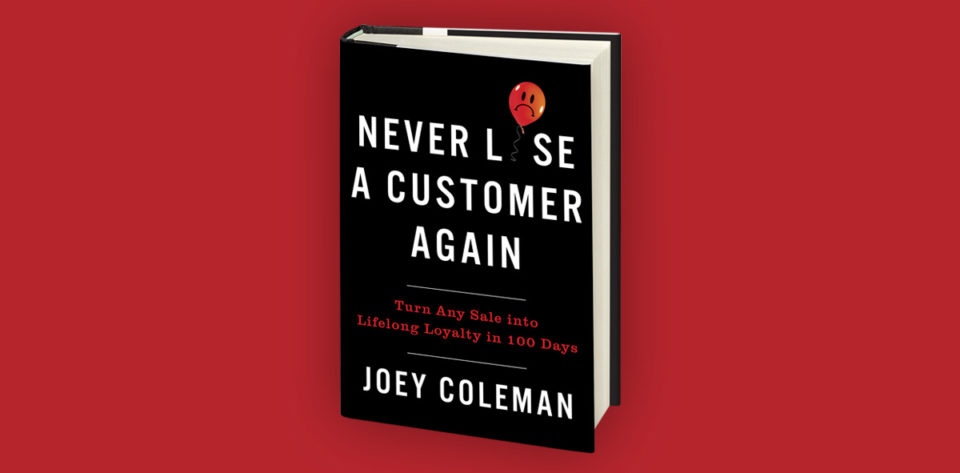
Customer Experience Is a Feeling
Joey defines the customer experience as the emotions that your customers undergo or navigate through or have thrust upon them through their interactions with you, your team, your product and service, and beyond.
In this clip, he explains his view of CX …
Often, customer experience and customer service are used interchangeably, but that’s incorrect.
Customer service is a reactive behavior. It’s what you do when something goes wrong or when the customer raises their hand and says, “I need something.”
Customer experience is proactive. It’s what you do before the customer even raises their hand, or maybe even before they become a customer. It forges a deeper connection with your brand, product, or offering to build a more personal connection with who you are and what you’re doing through the touch points and interactions that you create for them.
It is completely holistic.

Grain Silos Are Good, Business Silos Are Bad
Even in a really good company where people communicate well, a silo is still a silo. “He’s a sales guy. He’s a marketing guy. She’s a customer success person.” How do you integrate from start to finish across these touchpoints?
Coleman grew up in a farming community in Iowa. He fondly remembers driving past farms and seeing picturesque grain silos. “While silos are fantastic on a farm, they are absolutely horrific in an organization,” he says.
That org structure doesn’t work anymore because the customer wants whoever they’re talking with to have complete insight into their relationship with your company. They don’t want to be punted down the line to the next division or the next department.

Coleman sees a couple of challenges historically to changing this model. The bulk of today’s CEOs and senior leadership came up through the ranks of sales or marketing. So most CEOs are predisposed to acquisition over retention.
On top of that, more money is spent on marketing and sales (acquiring) that is spent on retention. They focus on bringing them in the door instead of keeping them once they’ve arrived.
Play this video clip to see Joey talk silos …
It’s Not B2B, It’s H2H
Very few organizations make customer experience its own department. Usually it is part of sales or marketing, which are predisposed to acquisition instead of retention.
For many years business people adopted as their mantra the line from The Godfather, “It’s not personal, it’s strictly business.” The belief was that you were supposed to isolate emotion from enterprise.
Well, at the end of the day, there’s a human on the other side of that phone or website. You should think of your customer experience model as human to human or H2H. And research shows that even in a B2B interaction, the customer wants that same connection.
Fortunately, most cutting edge and progressive firms are elevating the customer experience role, and creating a chief experience officer who reports directly to the CEO.
The voice of the customer is being heard more often.
Here, Joey explains the importance of H2H and the reasons we tend to spend too little on customer retention …
The Future of Empathy
Empathy is the great differentiator in business.
Computers, AI, and robots can figure out some things very quickly and easily. If you talk to AI researchers, the hardest thing for them to recreate is empathy, which is one of the most useful skills a human being can have, even though it is seldom taught in any education model.
The benefit of empathy in business is that it acknowledges the emotional journey the customer is on. When we make a purchase, dopamine floods our brains. We feel joy, happiness, euphoria. This product or service is the answer to our dreams.
But almost as quickly, the dopamine recedes. Those positive feelings can sometimes be replaced by fear, doubt, and uncertainty, or buyer’s remorse. If you purchase the wrong rice cooker for your home, no one’s getting fired. If you buy the wrong CRM software, wrong HR platform, or even the wrong chairs for your business, you might lose your job.
The goal is to avoid buyer’s remorse at all costs. You need to close the gap between those two emotional points with empathy, or you’re in for a bumpy customer experience ride.
Despite empathy’s importance, Joey didn’t use the word in Never Lose a Customer Again. Listen to the episode to hear him explain why not and check out this clip to understand its importance more clearly …
The Crucial First Hundred Days
One of the first stories Joey tells in Never Lose a Customer Again came from a bank customer retention study that he read one weekend (don’t judge him for the exciting way he spends some Saturday nights!).
The study pointed out that 32% of people who open a new bank account close it before the one-year anniversary, with over half of them doing so in the first hundred days. This, in spite of the fact that the process of opening a bank account is tedious and time-consuming.
As a result, banks offer sign-up bonuses between days 90-100. They’ve learned that if they keep you to day 101, they’ll likely keep you as a customer for a minimum of five years.

This prompted Coleman to do a little more research (hopefully, not on a weekend).
Around the world, between 20-80% of new customers will either actually leave your business in the first hundred days or will mentally check out and decide not to renew their contract.
This inattention to retention is the biggest threat facing business today. Hardly anyone is researching it because it’s not as sexy to talk about retention as it is to talk about acquisition.
Follow the Money
The group that seems to have figured this out are the VCs that specialize in software as a service. They are giving enhanced valuations to companies with a smaller churn rate. The valuations are anywhere from three to five times greater for a company that has a lower churn rate than for those that offer the exact same product with a higher churn rate.
To use another movie truism, as Deep Throat said in the film version of All the President’s Men, VCs have learned to “follow the money.”
If you have a very low churn rate, the upstream implication is that you must be a well-run company that is providing a great customer experience.
When you enhance customer experience, you by default enhance employee experience. They are two sides of the same coin. As your customer retention increases, your employee retention increases. Morale goes through the roof. Employees are more excited to come to work, they’re coming up with better ideas, going the extra mile, and doing more.
Two of the biggest line item costs in most businesses, are the money spent on people and marketing/sales. So if you can improve the margins in both of those, you dramatically increase the overall profitability of your organization.
So the next time you have a free Saturday night on your hands, maybe you can plot how to keep your customers for the first 100 days. Reading Joey’s book is a great place to start.
The Value of Video
When you read Never Lose a Customer Again, you’ll immediately recognize that Joey is an advocate for video, including simple, personal videos in emails.
Video has one foot in the digital world, but one foot in the analogue, too. It’s “the closest approximation of an in-person meeting without having to be in person,” so you can create connection from a distance and at scale.
Hear about more benefits of video, a very specific story and use case, and several useful video tactics …
This post is based on an interview with Joey Coleman, the founder and Vhief Experience Composer at Design Symphony and the bestselling author of Never Lose a Customer Again: Turn Any Sale into Lifelong Loyalty in 100 Days.
To take this episode on the go (and to take many more like it!), please subscribe to The Customer Experience Podcast.
While you’re there, take a moment to leave a rating or review to help others find these podcast conversations!
If you don’t use Apple Podcasts, you can listen to The Customer Experience Podcast on Spotify, Google Podcasts, or Stitcher.
More Great People on The Customer Experience Podcast
Coming Soon:
- 5-time founder and 2-time CEO David Cancel (Drift)
- Marketing leader Brett Chester (Sitetracker)
- Sales leader Charles Green (Trusted Advisor)
- Customer success leader Jordan Olivero (Swimlane)
Listen Now:
- Marketing leader Ann Handley (Marketing Profs)
- Customer experience keynote speaker David Avrin (Visibility International)
- Sales and marketing pro Steve Pacinelli (BombBomb)
- Customer success manager Nick Hart (Outreach)
- See them all by clicking here
Podcast questions or guest recommendations? Send me an email: Ethan (at) BombBomb (dot) com
Build connection from a distance and at scale.
Joey’s advocacy of video in the clip above is right on. The use case (and stats!) he provides in that clip are powerful. As he says, your webcam or smartphone will often get you better results than a studio production.



